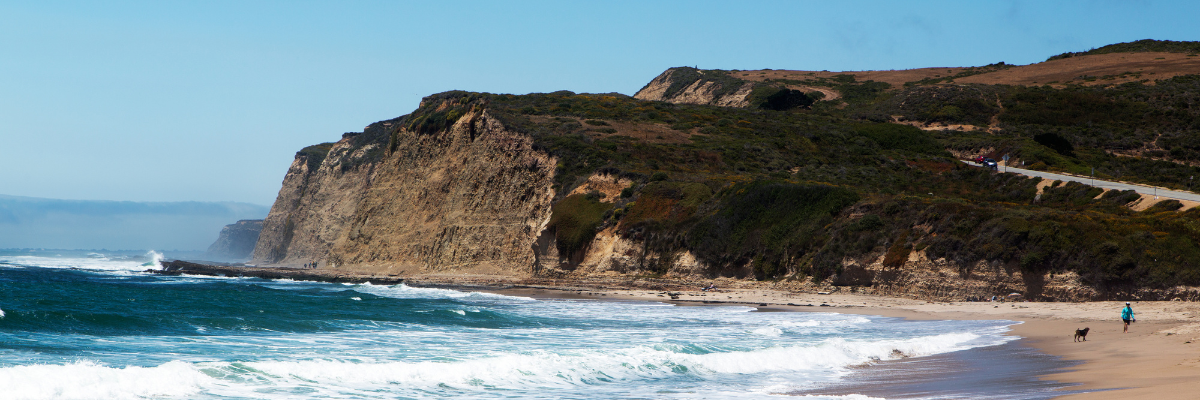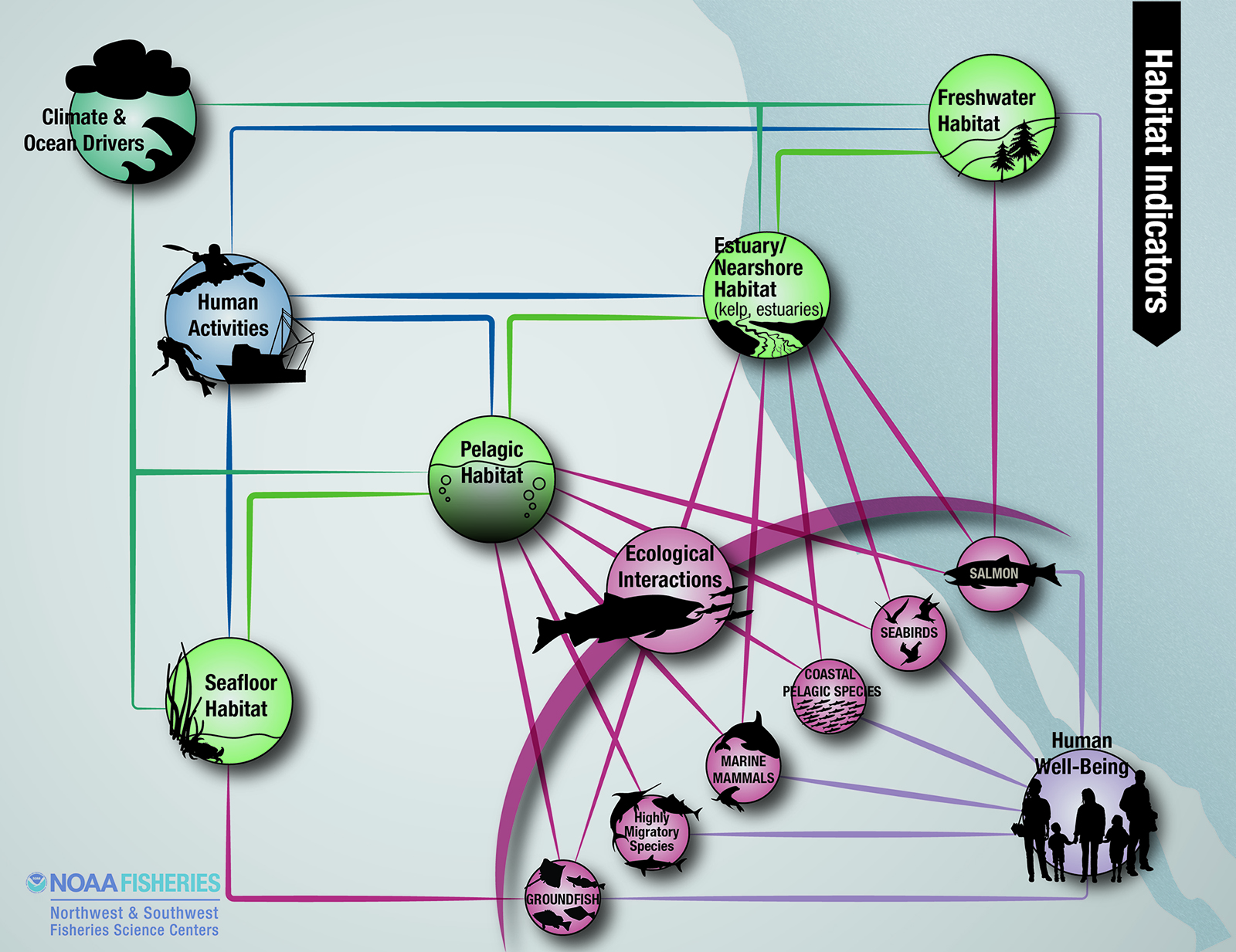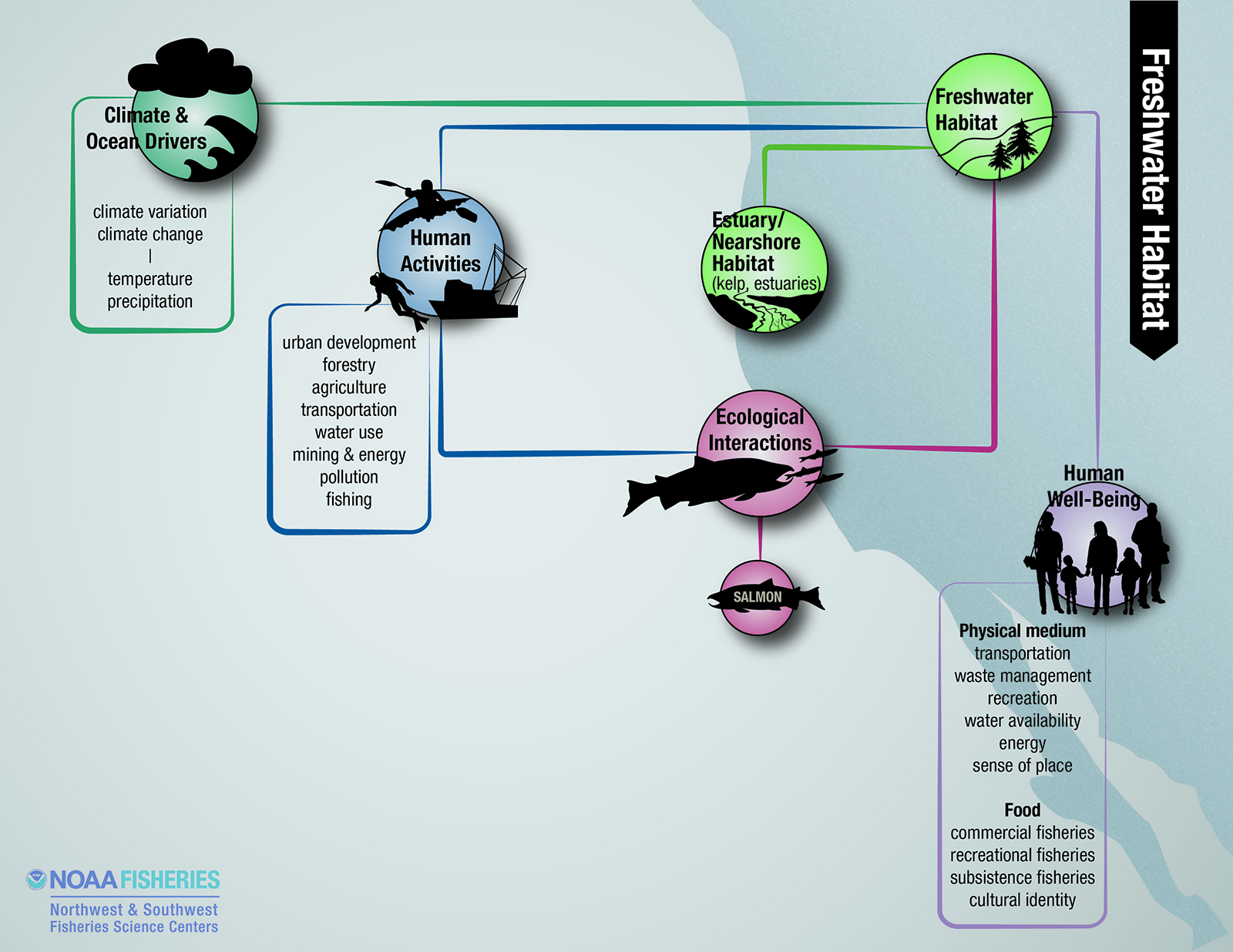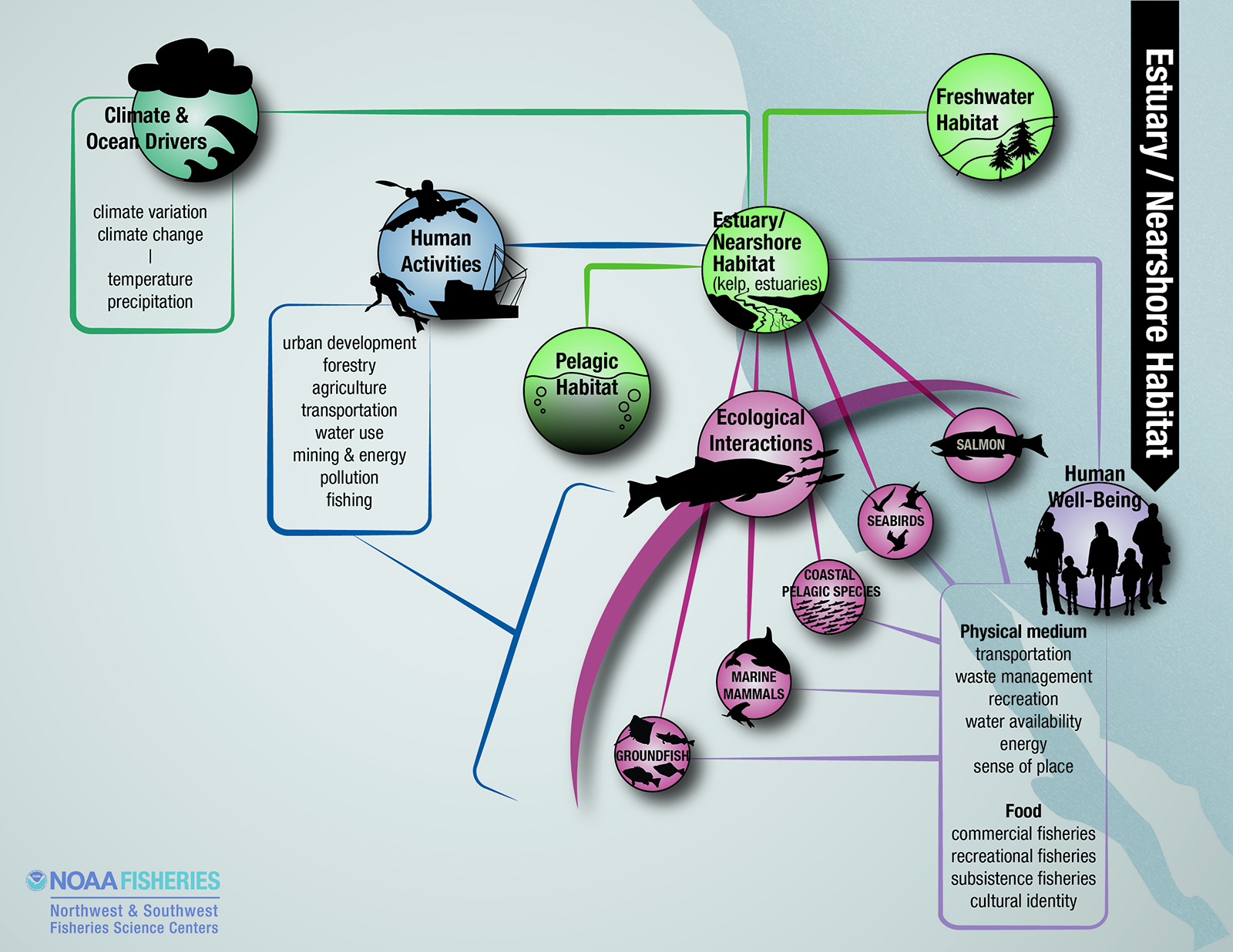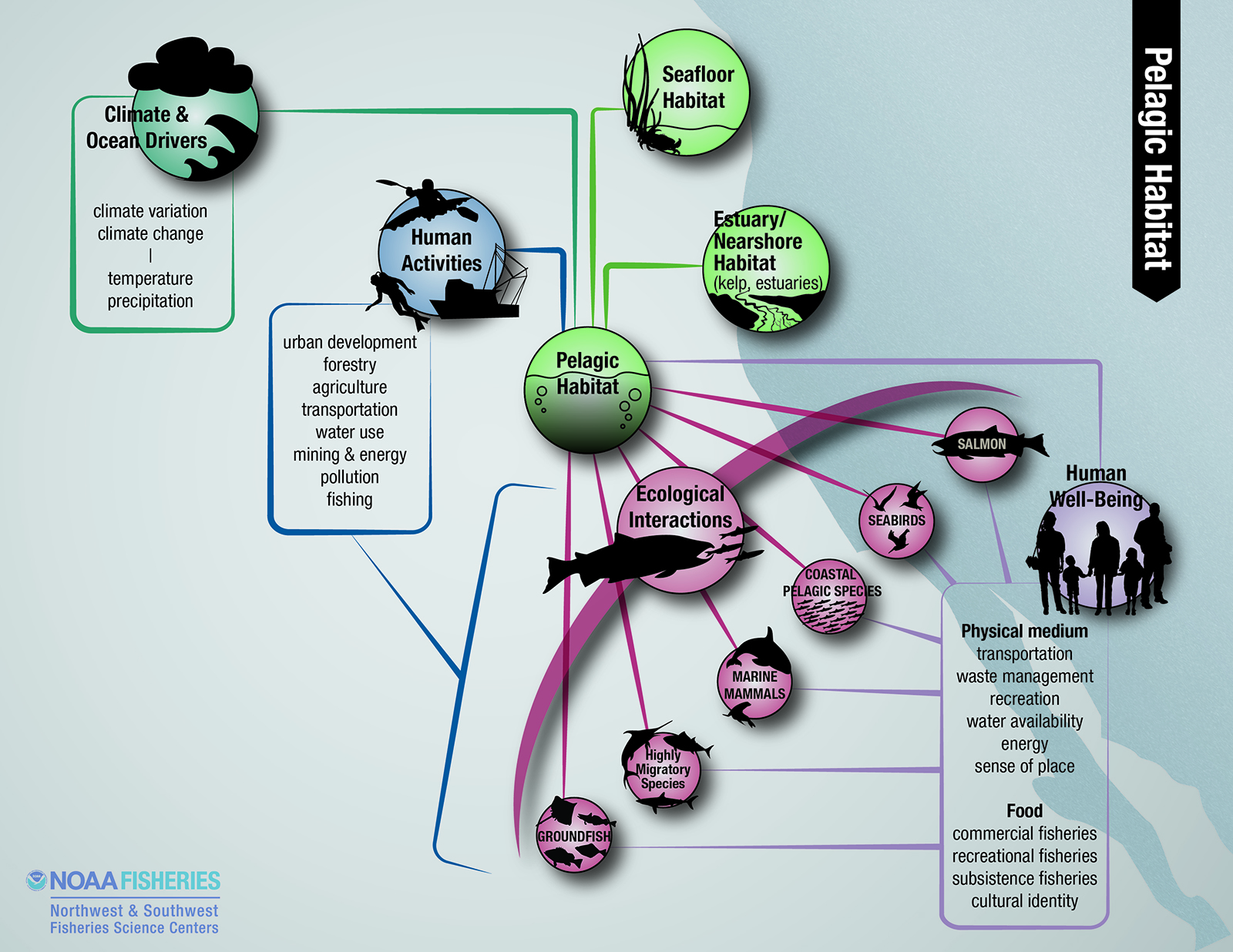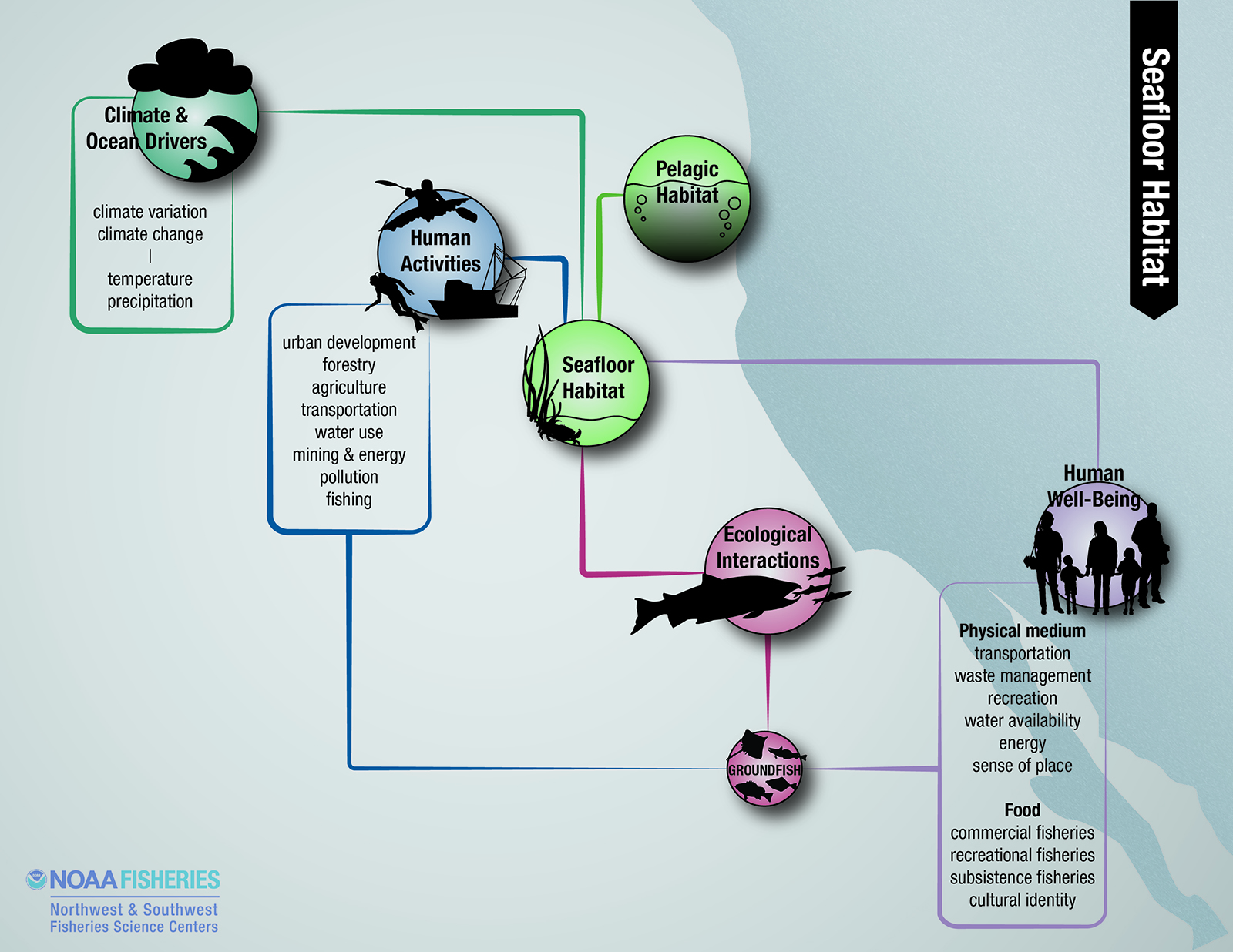Aquatic habitats support diverse biological communities and are the focus of management mandates, species conservation initiatives, and restoration efforts. Habitat quantity and quality is affected by both long-term climate processes and a variety of human activities. Yet, effective management is often hindered by a lack of understanding of habitat condition and function through time and space.
Incorporating habitat into the EBM framework is crucial to understanding the scale of habitat interconnections, as well as linkages between habitat drivers, dependent marine resources, and associated human benefits.
